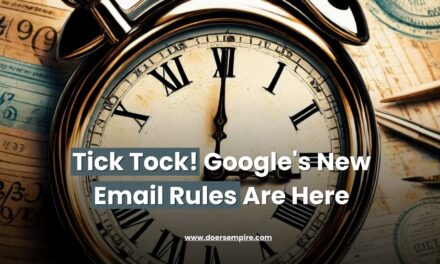Ever dream of knowing exactly what your customers want, right when they want it? Real-time data platforms promise to turn customers into loyal fans. This study reveals the truth about the flashy tools: can they truly make your marketing sparkle, or are they just smoke and mirrors?
Find out the complicated balance between the aspiring promises and the actual capabilities of real-time customer data platforms (CDPs). This research shows how these platforms aim to transform personalized marketing and customer experiences, yet they face practical challenges and limitations in truly achieving real-time data utilization.
Success depends on the ability to deliver the right message to the right audience at the perfect moment. In the world of modern digital marketing, accuracy is the goal of every marketer, a blend of timing and relevance that turns potential into engagement.
People’s interests shift like the seasons, while the challenges and opportunities here are clear. Set up marketing messages that are as dynamic and timely as the customers themselves, and hold real-time customer data. But the question remains: Is it possible to achieve this level of adaptability and precision with a customer data platform?
Why do we need a Customer Data Platform (CDP)?
The Customer Data Platform (CDP) is a system marketers manage to collect, organize, and document customer data from various sources. It creates individualized customer profiles and forms a comprehensive, suitable database that integrates with other marketing technologies. Interest in CDPs has grown significantly, with a 32% increase among marketers from 2021 to 2022 and a 91% rise in attention from Chief Information Officers (CIOs) between 2020 and 2021, indicating its growing importance in marketing and data management strategies.
Real-Time and Conventional Customer Data Platforms:
A real-time CDP is capable of collecting, incorporating, standardizing, and activating customer data from a variety of sources instantly. But the term’real time’ is flexible; it could mean anything from immediate to several hours. Practically speaking, different functions of a CDP operate at varying speeds, meaning not all actions are completed at the same rate.
In the competitive field of CDP providers, most claim to offer real-time services. Adobe, for example, has its Adobe Real-Time CDP, and Blueshift claims its CDP updates customer profiles in real-time with each new interaction. Yet, finding a provider that will acknowledge any time inconsistency in updating customer profiles after their activities is challenging.
Jane Doe, a marketing expert, emphasizes the importance of this connection. “Real-time CDPs allow us to see numbers and trends but also to understand our customers as individuals with unique needs and preferences.”
Quick Updates and Easy Access with Real-Time CDPs:
Exploring the field of real-time functionality discloses a layer of complexity. Customer Data Platforms (CDPs) are generally expected to beat traditional data storages like warehouses or lakes in speed, offering quicker recovery of customer data. Yet, this fast access only sometimes correlates to equally speedy updates in customer profiles.
RedPoint Global, a specialist in CDP and journey orchestration, identifies four distinct dimensions of real-time operations within the CDP framework, commenting that their significance varies according to the specific requirements of each client:
1. Quick Profile Refresh:
This process demands the real-time refresh of customer profiles using data from initial source systems. The effectiveness of this update relies heavily on the source systems’ capability to provide data immediately.
2. Direct Profile Access in Real Time:
This functionality enables external systems to directly access current customer profiles, even though the actual profile data might be updated on a less frequent basis, such as each day.
3. Swift Identity Matching:
In an ideal scenario, this is about quickly figuring out who’s in your customer data using unique identifiers. In cases where unique identifiers are not available, a more complex identity resolution process is required to align profiles with data elements, a task that can be challenging even without the pressure of time.
4. Optimization of Interactions in the Moment:
This aspect combines updating and accessing capabilities, allowing the CDP to improve customer interactions in real-time, like modifying offers based on a customer’s real-time online activities.
It is crucial to recognize that the title real-time CDP’ does not guarantee the inclusion of all these features on every platform.
Utilizing Instant Data for Rapid Decision-Making:
Real-time customer data platforms (CDPs) stand out for their ability to turn complex technology into a user-friendly tool. They bridge the gap between intricate data processing and practical marketing applications. This transformation is crucial for marketers who may not have extensive technical expertise but need to tackle the power of data for effective decision-making.
These platforms excel at simplifying the data analysis process. They break down vast amounts of customer information into understandable and actionable insights. This simplification is key in a world where data drives decisions, but its complexity can often be overwhelming.
By making data more accessible, real-time CDPs socialize the use of information. All marketing teams can take advantage of the rich resource of customer data they provide. This accessibility ensures that marketing strategies are based on senses but are backed by solid, data-driven insights
A Future-Oriented Investment:
Investing in a real-time CDP is about keeping up with the present, it’s about future-proofing your marketing strategies. As customer data becomes increasingly essential, the ability to process this data in real time will determine the leaders among the followers in the marketing world.
Conclusion:
Are your marketing decisions based on yesterday’s news? In the age of real-time, clinging to outdated data is like navigating with a broken compass. With a real-time CDP, you can paint this reality into existence.
While real-time CDPs carry great promise for personalized marketing, the reality is a complex mix of potential and practical limitations. Marketers must carefully estimate whether a CDP’s capabilities adjust to their specific needs and the speed required for their marketing strategies.
Visit our website today, connect with us on LinkedIn to discover exclusive industry insights, or follow us on Facebook for upcoming industry news.










